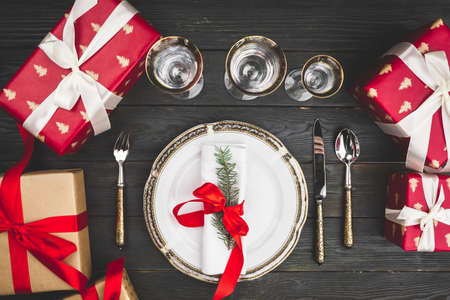Introduction to Timeless British Dining Style
When it comes to creating a dining area that truly feels like home, few aesthetics rival the timeless appeal of classic British elegance. Rooted in centuries of tradition, this style gracefully blends heritage and sophistication, offering a sense of understated luxury that never goes out of fashion. At its heart, classic British dining design is defined by thoughtful craftsmanship, quality materials, and an eye for both comfort and formality. Whether it’s the soft gleam of polished oak, the presence of antique sideboards, or the subtle nods to Georgian or Victorian influences, these elements come together to create spaces that feel welcoming yet refined. The enduring popularity of these styles in British homes speaks volumes about their adaptability; they effortlessly complement both period properties and modern builds alike. More than just a trend, classic British dining décor stands as a testament to a culture that values tradition, conviviality, and the art of gathering around the table. In this article, we’ll explore what makes these dining spaces so special—and why they continue to be cherished choices for households across the UK.
Traditional Features of British Dining Rooms
When envisioning a truly British dining area, several hallmark features immediately come to mind. These elements, rooted in centuries of tradition, continue to define the character and elegance of dining rooms across the UK. Let’s examine these classic components and their role in creating an unmistakably British ambience.
Wood Panelling: Character and Warmth
One of the most iconic features in traditional British dining rooms is wood panelling. From rich mahogany to understated oak, these panels lend texture, depth, and warmth to the space. Panelling not only provides visual interest but also speaks to a sense of craftsmanship and permanence that is central to classic British interiors.
Classic Colour Palettes
The colours chosen for a British dining room often reflect restraint and refinement. Muted hues such as sage green, dove grey, deep burgundy, and navy blue are popular choices, sometimes accented with crisp white or cream trim. These colours provide a serene backdrop that allows period furniture and decorative pieces to stand out without overwhelming the senses.
Period Furniture: Timeless Elegance
British dining rooms typically feature period furniture styles such as Georgian, Victorian, or Edwardian. Solid wood tables—often extendable—paired with upholstered chairs are staples. Sideboards and display cabinets not only offer storage but also showcase heirloom china and silverware, contributing to the sense of heritage and continuity.
Key Elements at a Glance
| Feature | Description | Contribution to Ambience |
|---|---|---|
| Wood Panelling | Mahogany, oak, or walnut wall coverings | Adds warmth and traditional charm |
| Classic Colour Palettes | Sage green, navy blue, burgundy, creams | Creates a refined and calming setting |
| Period Furniture | Georgian/Victorian tables & chairs, sideboards | Imparts timeless elegance and history |
The Quintessentially British Effect
Together, these features foster an atmosphere that is both welcoming and sophisticated. Whether hosting a formal dinner or enjoying a relaxed family meal, the traditional elements of a British dining room evoke a sense of occasion while retaining everyday comfort. Their enduring appeal lies in their ability to blend function with heritage—a testament to timeless British style.
![]()
3. Iconic British Design Motifs
When curating a dining area that captures the essence of classic British elegance, it’s essential to understand the iconic design motifs that have shaped the nation’s interiors for centuries. These timeless elements not only reflect Britain’s rich architectural history but also bring a sense of refinement and character to any home.
Georgian Symmetry and Proportion
The Georgian era is renowned for its balanced proportions, restrained ornamentation, and harmonious symmetry. In the dining area, this translates to well-ordered layouts, symmetrical placement of furniture, and subtle decorative details such as cornices or wainscoting. Embracing these features fosters a sense of calm and understated sophistication—qualities synonymous with British style.
Victorian Ornamentation
Moving into the Victorian period, design became more expressive and elaborate. Dining rooms from this era often showcase ornate mouldings, decorative ceiling roses, and richly patterned wallpapers. Incorporating touches of Victorian flair—think carved wooden sideboards or an intricately framed mirror—can instantly elevate your space and create a feeling of grandeur without overwhelming the room.
The Timelessness of British Craftsmanship
At the heart of these styles lies an appreciation for craftsmanship: polished wood finishes, finely upholstered chairs, and heritage fabrics like damask or tartan add layers of texture and authenticity. By blending Georgian symmetry with Victorian opulence, your dining area becomes both inviting and impressive—a setting fit for long Sunday roasts or festive gatherings.
Enriching Your Dining Experience
Adopting these key motifs allows you to celebrate British tradition while tailoring the space to modern living. Whether you opt for subtle nods or bold statements, integrating these historic features ensures your dining area remains both stylish and enduring—a true testament to timeless British elegance.
4. Materials and Craftsmanship
One of the cornerstones of timeless British dining area style is an unwavering commitment to quality materials and meticulous craftsmanship. British design has long celebrated the natural beauty and durability of solid timbers, with oak and mahogany being favoured choices that have stood the test of time. These materials are not merely selected for their visual appeal but also for their resilience, making them ideal for family homes and gatherings that span generations.
The Enduring Qualities of Traditional Materials
Solid oak, with its pronounced grain and robust texture, offers a warm, inviting presence in any dining space. Polished mahogany, prized for its deep colour and lustrous finish, brings a sense of refined luxury. Both woods age gracefully, developing character over time—a true hallmark of classic British interiors.
| Material | Key Characteristics | Common Uses in Dining Areas |
|---|---|---|
| Solid Oak | Durable, warm-toned, prominent grain | Dining tables, chairs, flooring |
| Polished Mahogany | Rich colour, smooth finish, elegant look | Sideboards, display cabinets, table tops |
| Walnut | Sleek texture, darker hue, subtle grain | Chairs, decorative panels, smaller furniture pieces |
The Art of Joinery in British Design
A defining feature of British craftsmanship is detailed joinery—dovetail joints in drawers, mortise-and-tenon in chair frames, and hand-carved embellishments that tell stories of skilled artisanship. These traditional techniques not only ensure structural integrity but also elevate each piece to a work of art.
Why Craftsmanship Matters
The emphasis on materials and workmanship ensures every element in the dining area feels intentional and enduring. When you invest in well-crafted British furniture, youre choosing pieces that are as practical as they are beautiful—made to be cherished through everyday use and special occasions alike.
5. Blending Modern Taste With Tradition
Successfully merging contemporary preferences with the enduring appeal of classic British dining rooms calls for a considered and practical approach. It’s about finding harmony rather than contrast, allowing each element to complement the other. Here are some hands-on strategies to guide you:
Consider Your Colour Palette
Start with a timeless base—think gentle neutrals, soft greys, or rich navy blues typical of British interiors. Introduce modern touches through accents like bold artwork, vibrant chair cushions, or a statement rug. This keeps the room rooted in tradition while feeling current.
Mix Materials Mindfully
Pairing traditional oak or walnut tables with contemporary metal-framed chairs or sleek lighting fixtures is a subtle way to refresh your space. Glass tabletops or minimalist ceramics can add a crisp, clean edge without overwhelming the classic framework.
Update Classic Forms
If you favour traditional silhouettes—such as Windsor or Chippendale chairs—consider reupholstering them in modern fabrics or opting for lighter finishes. This preserves their quintessential British form but introduces a fresh perspective.
Layer Lighting Appropriately
Classic dining rooms often feature ornate chandeliers or sconces. Bring these into the present by selecting streamlined designs in brass or matte black finishes, or supplementing with dimmable LED fixtures for flexible ambiance.
Accessorise With Intention
Display heirloom china alongside contemporary tableware. Incorporate both vintage silverware and simple glassware on the same table setting. This curated mix feels lived-in and authentic—key to British style—while making room for modern life.
The Balance of Old and New
Ultimately, blending modern taste with tradition in your dining area isn’t about choosing one over the other; it’s about thoughtful integration. Stay true to the heart of classic British character—warmth, comfort, and understated elegance—while weaving in those personal touches that reflect today’s sensibilities.
6. Finishing Touches: Decor and Accessories
To truly achieve a timeless British dining area, the right finishing touches make all the difference. Begin with lighting: opt for classic pendant lights in brass or polished nickel, or consider an antique chandelier for a statement piece that evokes old-world charm. Wall sconces with fabric shades add warmth and a layered glow, essential for creating an inviting atmosphere.
When it comes to textiles, embrace traditional British patterns such as tartan, houndstooth, or floral prints on cushions, table runners, and curtains. Natural fabrics like linen and wool in muted tones—sage green, rich burgundy, or navy—bring comfort while nodding to heritage style.
For tableware, look for fine bone china, perhaps with understated florals or gilded edges. Heirloom silverware and crystal glassware lend a sense of occasion; displaying these items on a Welsh dresser or open shelving adds both practicality and visual interest.
Art plays a subtle yet significant role in reinforcing timeless British style. Landscapes inspired by the English countryside, vintage botanical prints, or classic oil portraits create a sense of history and refinement. Choose simple, well-crafted wooden or gilt frames to complete the look.
Don’t overlook small details: fresh flowers in ceramic jugs, vintage clocks, or hand-thrown pottery pieces each add authenticity. By carefully curating these accessories and accents, you can evoke the enduring elegance of classic British dining spaces within your own home.
7. Conclusion: Making Classic British Elegance Your Own
Bringing classic British elegance into your dining area is not about replicating a period room or following strict design rules—its about capturing a sense of timelessness and warmth that fits naturally into your daily life. Start by identifying the elements you love most from traditional British interiors, whether it’s rich wood finishes, refined upholstery, or subtle heritage patterns. Blend these with your favourite modern touches to create a space that feels both comfortable and enduring. Don’t be afraid to experiment; even a single statement piece, such as a vintage sideboard or a well-chosen chandelier, can lend character and sophistication. Remember, the heart of British style lies in welcoming hospitality and effortless charm. Allow your dining area to evolve with your needs—mix old and new, celebrate craftsmanship, and keep functionality at the forefront. With thoughtful choices and a bit of creative flair, you can craft a dining space that feels inviting for family meals, festive gatherings, or quiet moments alike—a true reflection of classic elegance adapted for modern living.


